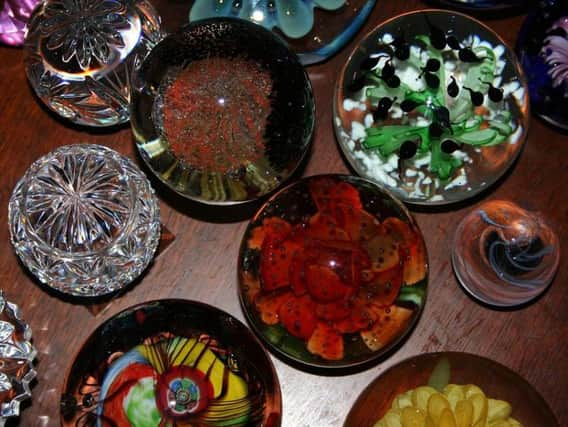Collecting glass paperweights remains a popular hobby


Collecting paperweights allows you to enjoy some beautiful designs at the more robust end of glassware.
The first documented appearance of the modern glass paperweight can be traced to the Exhibition of Austrian Industry held in Vienna in 1845, and collecting has remained a popular hobby since the war.
Advertisement
Hide AdAdvertisement
Hide Ad1845-1860 is known as the “golden age” of French paperweights, with three main factories St Louis, Clichy and Baccarat manufacturing about 20,000 exquisite examples during this time.
These are the “holy grail” for most collectors today.
The two main designs are “millefiori”, made from tiny rods, like cross-sections of a stick of rock, and “lampwork”, which uses a blowlamp to create flowers, fruit, butterflies or animals.
Paperweights vary in price from £5, to £5,000 for original designs. Modern techniques allow for incredible detail, and make good investments which will be worth decent money in 20-30 years’ time. Limited editions from Caithness, and other companies such as Stratheam, Perthshire, Selkirk and John Deacons will all accrue in value.
In collecting older designs, there is no simple way to tell an antique paperweight from a modern or forgery.
Advertisement
Hide AdAdvertisement
Hide AdFrench paperweights tend to have a slightly concave base; you can also look for the ring of wear on the base, but there are no guarantees.
Only rarely did manufacturers incorporated the date or company initials into the base or design.
A good book will teach you how to recognise and date different design elements.
Workmanship, design, rarity, and condition therefore determine the value of a paperweight; from just a few pounds to whatever a collector is willing to pay! The record is an antique French paperweight which fetched a staggering $258,000 at Sotheby’s in New York in 1990.
Advertisement
Hide AdAdvertisement
Hide AdOur beautiful examples are much more affordable. They are priced between £10 and £20.
Lastly, how will you display it? A paperweight is in its element with light passing through it. This could be in its intended use, on a well-lit desk, but if your increasing collection needs a lit cabinet, make sure it is sturdy enough to take the considerable heft of cumulative, and well named, paperweights. I wouldn’t wish on anyone the horror of “shelf collapse”!